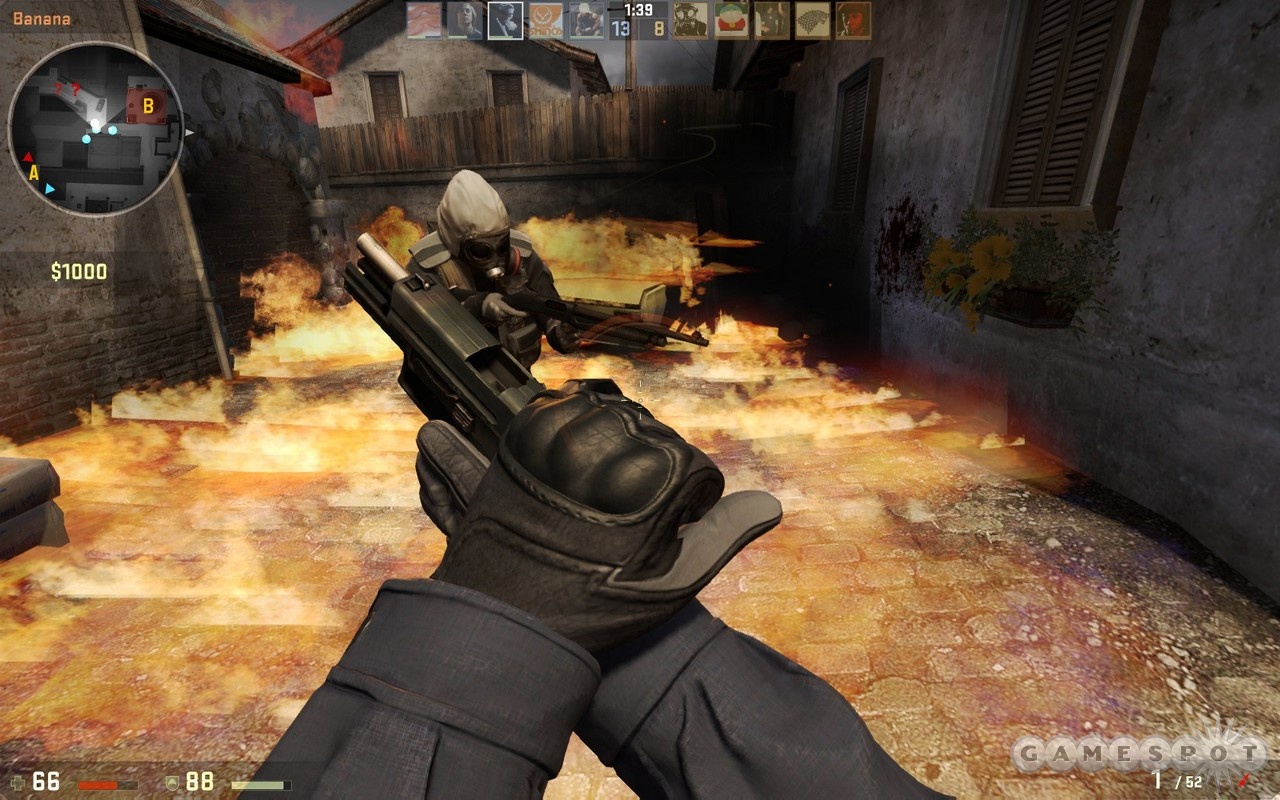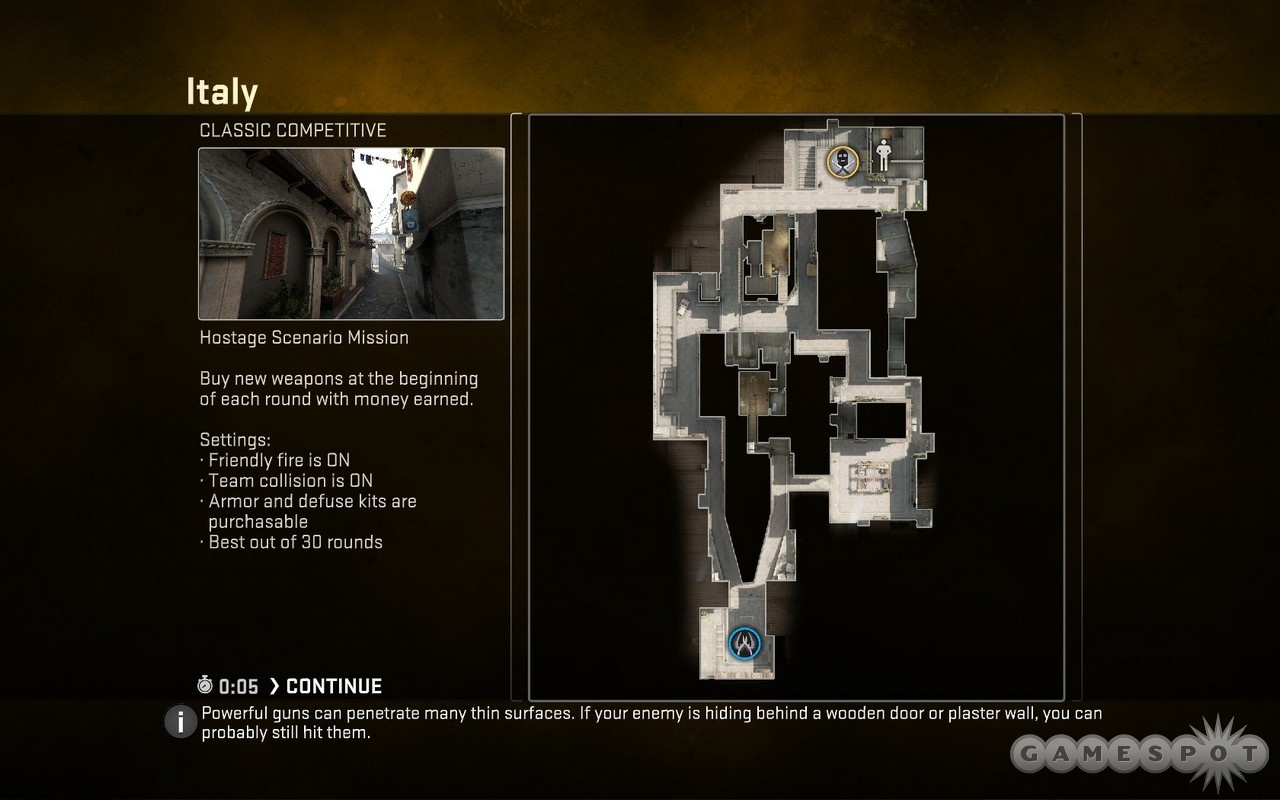More update than honest-to-goodness sequel, Counter-Strike: Global Offensive maintains much of what made the original Counter-Strike (and Counter-Strike: Source) so fantastic, while adding a couple of new game modes, both of which were based on user-made mods to the original game. In this update, Counter-Strike continues to enjoy the enthralling gameplay and near-perfect balancing that took it from a cult hit in college dorm rooms to one of the seminal games in the multiplayer first-person shooter genre.

In case you're unfamiliar, Counter-Strike is an entirely multiplayer experience. You can play offline against AI bots, but these are still merely simulating what it's like to play online, rather than really giving you a single-player game. The good news is that this is as good as online team-based shooters get. In the traditional game mode, there are two types of matches and two tiers of play. Casual level is for newer players and removes aspects like friendly fire and the need to purchase armor and ancillary items each round (more on that in a second). Ranked level is the original style of CS, with all the "realism" settings enabled, but it also features a comprehensive skill-based ranking system to try to balance teams and place good players with other good players.
Both of these tiers feature several maps--original CS maps like de_dust are reproduced here and still going strong, mixed in with entirely new maps--and each map is tied to one of two game types. In Defusal, one team (the Terrorists) must plant a bomb at a critical site and defend it until it explodes, while the other team (the Counter-Terrorists) must try to either prevent them from planting it or defuse it before it goes off. The other game type, Hostage Rescue, turns the tables. Here, the Terrorists have taken a group of AI hostages that they must protect until time runs out, while the CTs must assault their location and free the hostages.

One important facet to both of these game modes is that there are multiple short rounds in a match, and after each round you must purchase weapons, armor, grenades, and other equipment using money you earn for killing enemies, winning the round, or doing other important tasks. Thus, as games go on, winning teams tend to have better equipment, while losing teams tend to be worse off. The disadvantage is never insurmountable, but it does give teams an incentive to work, well, as a team. In serious matches, communication and planning are key, because players who die cannot respawn until after a round is over and cannot communicate with living team members.
The traditional CS modes are excellently balanced. Games are fast-paced without being unmanageable, skill is rewarded in both the planning and outfitting stages as well as in battle, and good teamwork typically beats individual skills. Pacing is fantastic, too, because you will generally die at least a few times, giving you time to observe other players' work, review your own mistakes, and plan for the next round during the downtime. Heck, even watching other players go at it can be entertaining in and of itself, as you shout at them to do this or not do that, knowing full well they can't hear you.
If you prefer no downtime, however, the two new game modes that have been added this time around should suit your fancy. Called Arms Race and Demolition, they both remove the classic purchasing mechanic and instead award you with a new weapon, instantaneously, when you make a kill. Depending on server settings, weapon awards generally go up in deadliness from an initial lousy weapon, reach an acme, and then begin to go down in usefulness, usually forcing you at last to use nothing but your knife.

Arms Race also removes the downtime of waiting after you die, and plays a lot more like a traditional deathmatch game, with much less in the way of teamwork since each individual is out to finish his slew of weapons as quickly as possible and get the win. Demolition changes this structure, instead challenging you to continue playing a more traditional CS-style game, but with your weapons getting worse and worse with each kill. Both of the new modes are tremendous fun.
No matter which modes you choose to play CS:GO in, however, you'd better be playing with a keyboard and mouse. On the PlayStation 3, playing with a controller is very difficult because CS:GO lacks the hand-holding auto-aim that console FPS players are generally used to, and because many PS3 players will likely be playing with a USB keyboard and mouse, which are both supported by CS:GO. 360 players aren't so lucky, unfortunately, as they're relegated to a controller.
This isn't really a disadvantage, of course, as everyone else on Xbox LIVE is playing with one, too, but you definitely won't be getting the ultimate CS:GO experience playing with thumbsticks and shoulder buttons. Regardless of your OS, you'll appreciate some of the bells and whistles it has appropriated from other Valve games, especially Team Fortress 2. Like in that game, you now have "nemesis" players who can dominate you by killing you consecutively, and you can take screenshots of the moment of your death, should you like to memorialize that kind of stuff.

When using a keyboard and mouse, you'll notice the controls are sharp and easily customizable. Unlike the guns in, say, Battlefield, most of CS:GO's guns do not have an aim-down-the-sight feature. There are no vehicles, special weapons, or power-ups, either. You get your gear, learn the maps, and rely on your skills to take you to the finish line. Graphics, while improved from the Source engine, are nothing fancy, and neither is sound--although veteran players will be gratified to hear that many of their favorite guns' sounds are retained from earlier versions (especially the thunderous AWP). CS:GO adds a lot of new guns, too, of various types, and even a new grenade, the incendiary grenade, which can light a small area on fire for a short time, preventing players from passing through without taking damage.
Bottom line, CS:GO adds plenty, tweaks a little, and keeps the best parts of the classic multiplayer FPS. If you're into shooters, team-based gameplay, or just classic games that are updated well, you won't do better at the moment than CS:GO.



